I’ve long found the Empathy Map activity, first developed by Dave Gray from XPLANE, to be an insanely useful tool. Popularised through the book Gamestorming, it’s wonderful for getting clients, stakeholders, and team members collaborating, contributing, and thinking about a product or service from the user’s perspective.
Where an empathy map can fall short, however, is its focus on the Before state. While capturing a snapshot of where your user is at before a project is useful, encouraging the group to envision what is possible often falls by the wayside.
Extending the Map
Modified versions of the original empathy map touch on this, but at Sketch Group we’ve found it useful to break the Before and After into separate activities.* In this way, you can explicitly encourage the group to ponder the potential for what is necessary to make your project a roaring success.
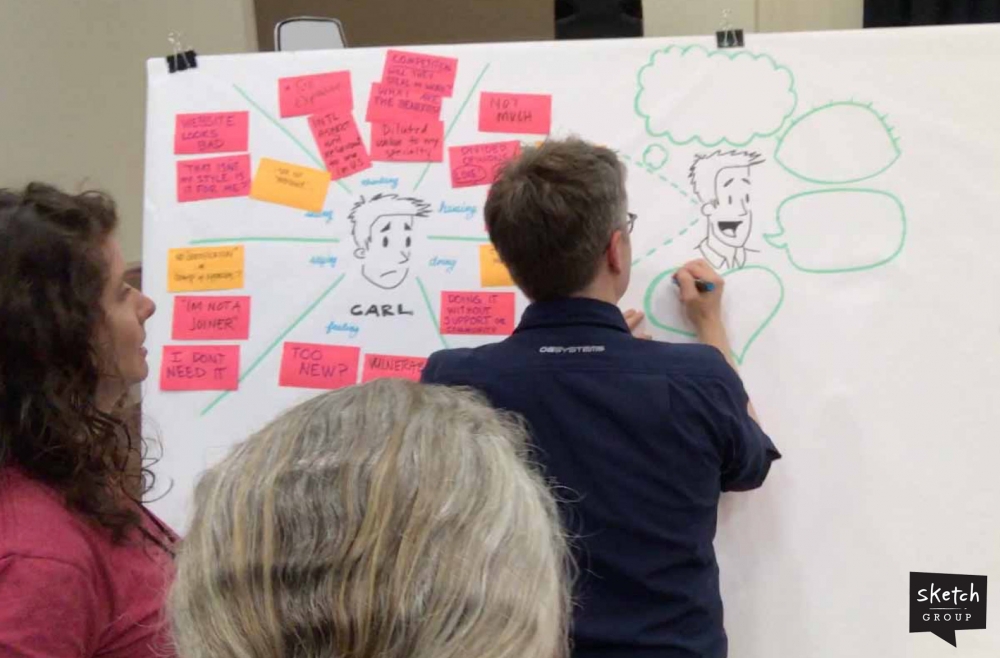
For our video clients, this usually means after the target audience has viewed the video we’re creating for them. For you, it may mean after your user has used the product or service you’re in the process of building.
How to run an Empathy Forecast
Here are the steps to follow when facilitating an empathy forecast activity.
1. Run an empathy map for the Before state. We use the following diagram for participants to fill in, using markers and sticky notes. Try to get as specific as possible when narrowing down the target audience—I’ll sometimes ask the group if they have an actual person in mind, and caricature them for the activity.
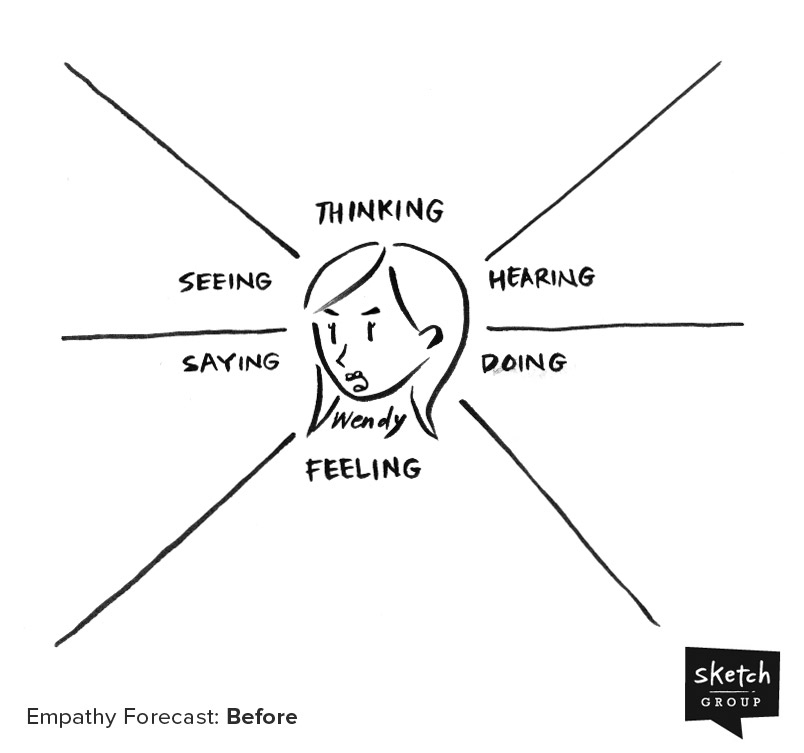
2. Run another empathy map for the After state. To mix things up, I draw the map differently, and take control of the whiteboard marker for this phase, capturing the group’s thoughts for them in succinct phrases. I’ll also usually draw the face looking happier than in the first map, to show the positive impact your product will have on the target user.
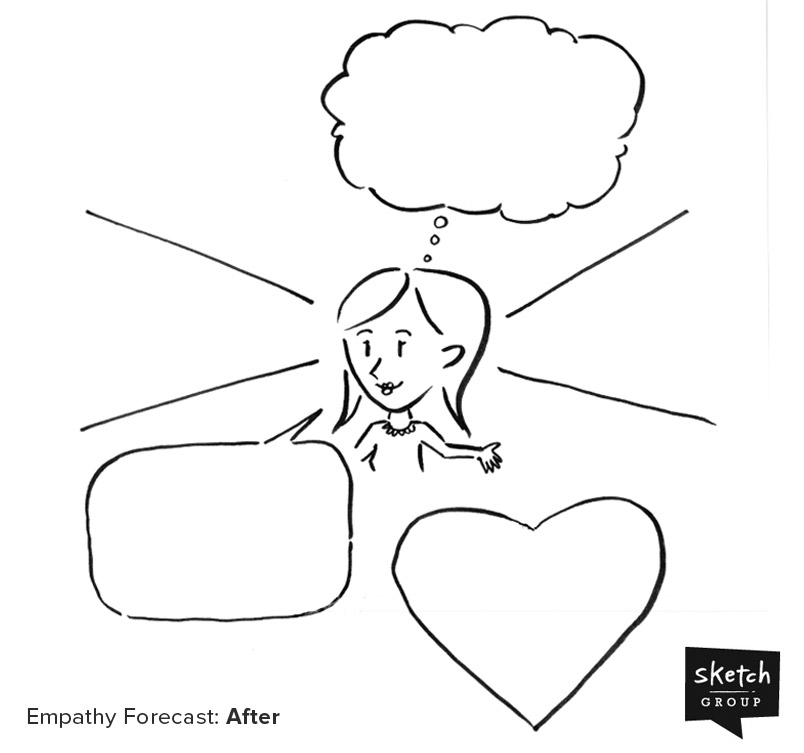
3. Connect the dots between Before and After. Ask the group “what does this person need to hear to get them from Before to After?” and write the answers along the connecting lines. The answer to this question for each section will provide you with invaluable phrases to use in your website copy, user interface labels, video call-to-action.
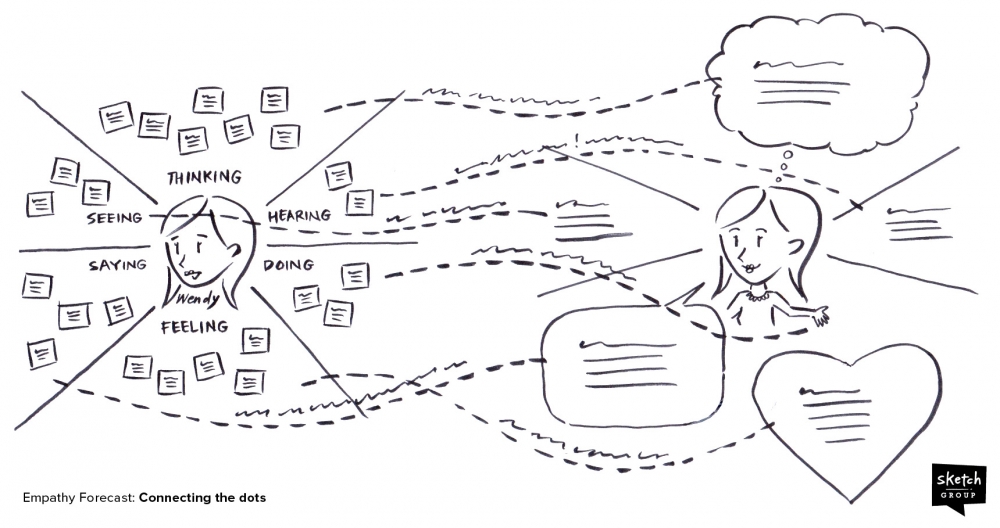
That’s it! Once you’ve connected each Before and After section, photograph the completed Empathy Forecast, and share them with participants after the meeting. There may be quite a lot of detail, so be sure to include close-ups of each section.
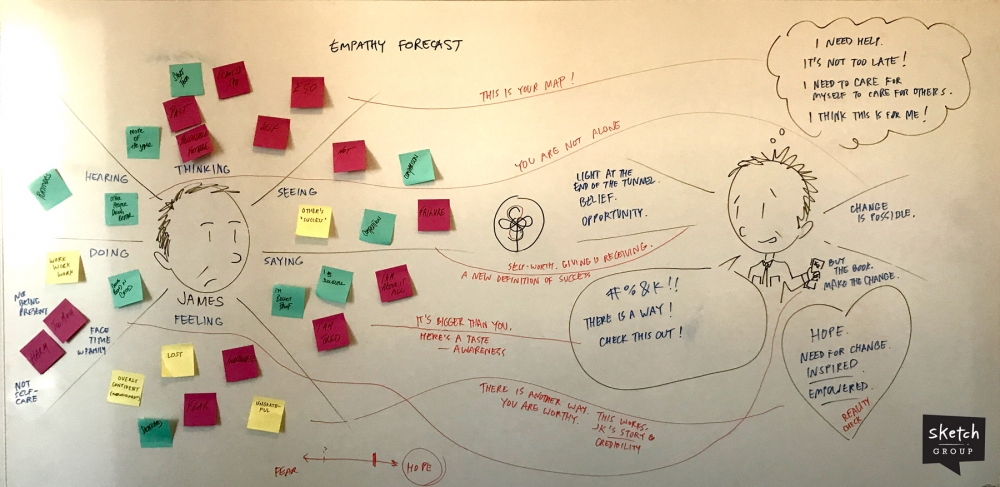
Go forth and forecast
The Empathy Forecast is my gift to you this season. While no substitute for real data on how and what your users think, feel, see, say, hear and do, it is a powerful tool for:
- giving your group the opportunity to participate in something that is often more creative and fun than their regular work activities
- encouraging empathy in the user amongst participants
- narrowing the scope of a project
- creating buy-in amongst clients and stakeholders
- quickly understanding a problem space at the start of a project
- demonstrating your professionalism and process as a consultant, and
- creating targeted messaging and key phrases that are likely to resonate with the target audience
It’s an easy activity to run, and it can deliver valuable insights and targeted, useful language. If you find it useful, I’d love to hear from you.
*Credit to Kerstin Norburn from Sketch Group, whose input on this activity as we tweaked and refined it was invaluable.

